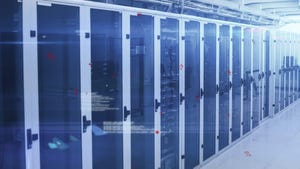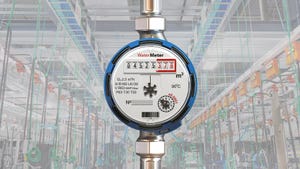What Is Closed-Loop Cooling, and When Should Data Centers Use It?What Is Closed-Loop Cooling, and When Should Data Centers Use It?
Here's a look at the differences between open- and closed-loop cooling systems in data centers – and how the latter can improve energy efficiency.
.jpg?width=1280&auto=webp&quality=95&format=jpg&disable=upscale)
Like the transistors embedded into CPUs, data center cooling systems can exist in one of two states: Open or closed. But unlike CPU transistors, the state of a cooling system has nothing to do with logic. Instead, it plays a key role in shaping the overall efficiency of cooling solutions – and, by extension, of the power effectiveness of the data center as a whole.
To explain why, here's a look at the differences between open- and closed-loop cooling systems in data centers, and how the latter can improve energy efficiency.
Types of Data Center Cooling: Open vs. Closed Systems
As we know, IT equipment generates heat. Cooling systems that can dissipate or remove that heat are imperative for preventing overheating, which could cause servers to fail or break down earlier than expected.
There are two basic ways to go about implementing a cooling system.
Open-loop cooling
Most traditional data center cooling systems work by blowing chilled air through server rooms. At the same time, intake vents placed in locations where warmer air might pool suck up hot air and move it to the chiller so it can be cooled down and piped back into the space.
This approach is called an open loop system because it circulates air through an open space. It's essentially the same as a central air conditioning system that circulates cold air through a house using a system of duct work.
Closed-loop cooling
An alternative approach, known as closed-loop cooling, injects chilled air into small, targeted areas – typically, individual server racks. So, instead of blowing air into the server room as a whole, closed-loop systems focus it on IT equipment. The "loop" is closed in the sense that it is restricted to a small area.
Closed-loop cooling is also sometimes called close-coupled cooling because it "couples" cooling systems closely with hardware they support.
Closed-loop cooling is akin to an air conditioning system that cools only the people inside a house, instead of the rooms that house them. That's not possible in the case of people, of course, because it's not practical to separate people from the ambient environment. But it is possible in the case of servers, which are typically organized into racks that can be sealed off from the rest of the room.
The Benefits of Closed-Loop Cooling
From both a cooling efficiency and energy efficiency perspective, closed-loop cooling is considered better.
The reason why is simple: By supplying cold air only where it matters, closed-loop systems don't waste energy cooling spaces, like the aisles between server racks, that don't require cooling – at least for the purposes of keeping IT equipment operating within a safe temperature range.
This translates to greater energy efficiency because less energy is necessary for cooling purposes.
In addition, closed-loop cooling can significantly reduce the total volume of air that systems need to chill because they're only working with the air inside specific spaces, instead of an entire server room. This means that overall cooling system capacity can be lower, leading to less costly installations.
Challenges of Closed-Loop Cooling
While closed-loop cooling is more efficient from an energy perspective, it also presents some challenges:
Higher installation costs: Closed-loop systems require server racks that can be sealed and fitted with specialized cooling equipment, leading to more costly setups than conventional racks. These costs may be recouped thanks to lower operating costs, but the upfront investment of closed-loop cooling is still not negligible.
High server room temperatures: Because closed-loop cooling only cools IT equipment, the rest of the server room can become hot, leading to less-than-pleasant working conditions for data center technicians. That said, secondary cooling systems could address this challenge by cooling the ambient space. If those systems only come on when technicians are in the room, or operate at higher temperatures, they'll still save money compared to an open-loop cooling system.
Less efficiency than alternative cooling: Closed-loop cooling is more energy-efficient than open-loop cooling, but it's not as efficient as other, more sophisticated methods like liquid immersion cooling and direct-to-chip cooling. The advantage of closed-loop cooling over these alternatives, though, is that it's less expensive to implement and less prone to catastrophic failures due to issues like leaking coolant.
These challenges make closed-looping cooling less than ideal for server rooms where technicians are frequently active, in which case cooling the entire room may be more practical. In addition, closed-loop cooling is not the best choice for data center operators seeking to optimize energy efficiency; immersion or direct-to-chip cooling is better in that case.
But if you're looking for a way to improve data center energy efficiency without breaking the bank, closed-loop cooling may be a good option.
About the Author
You May Also Like









